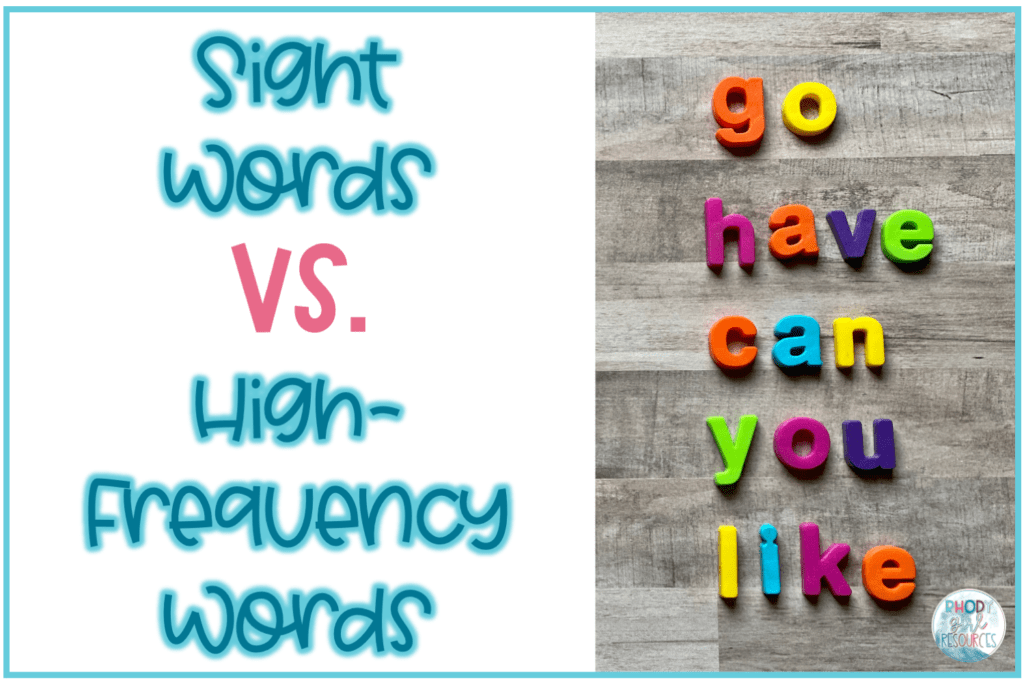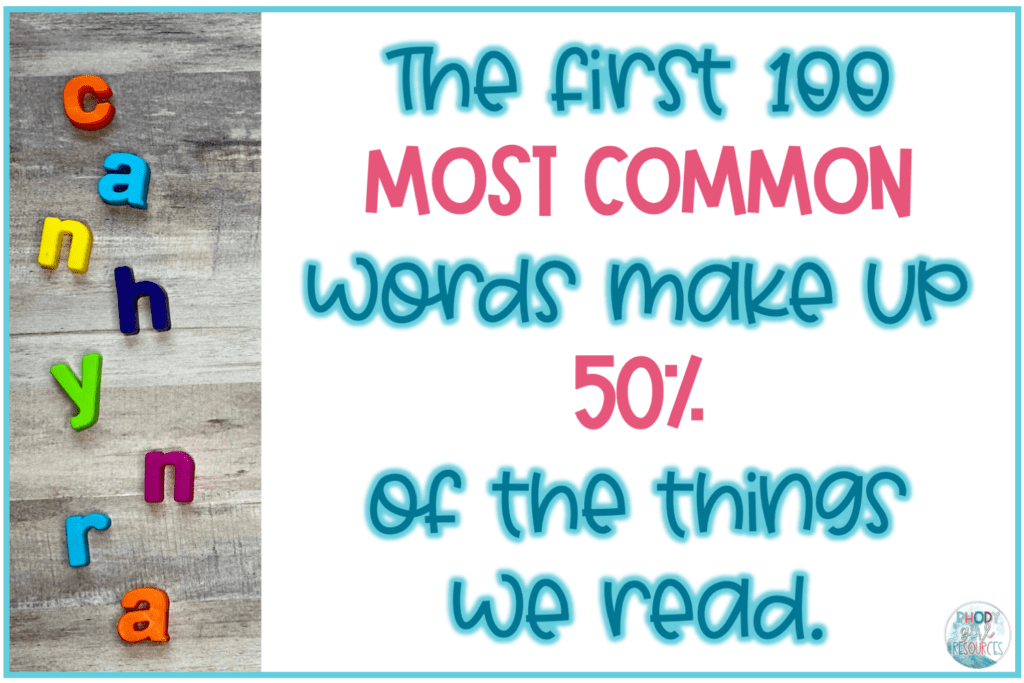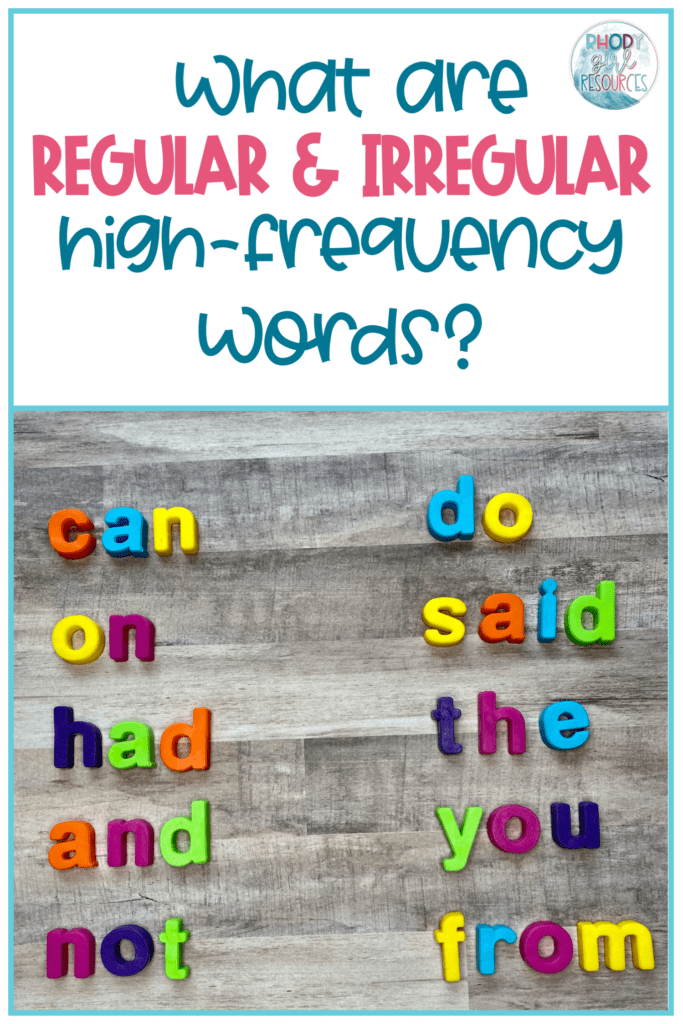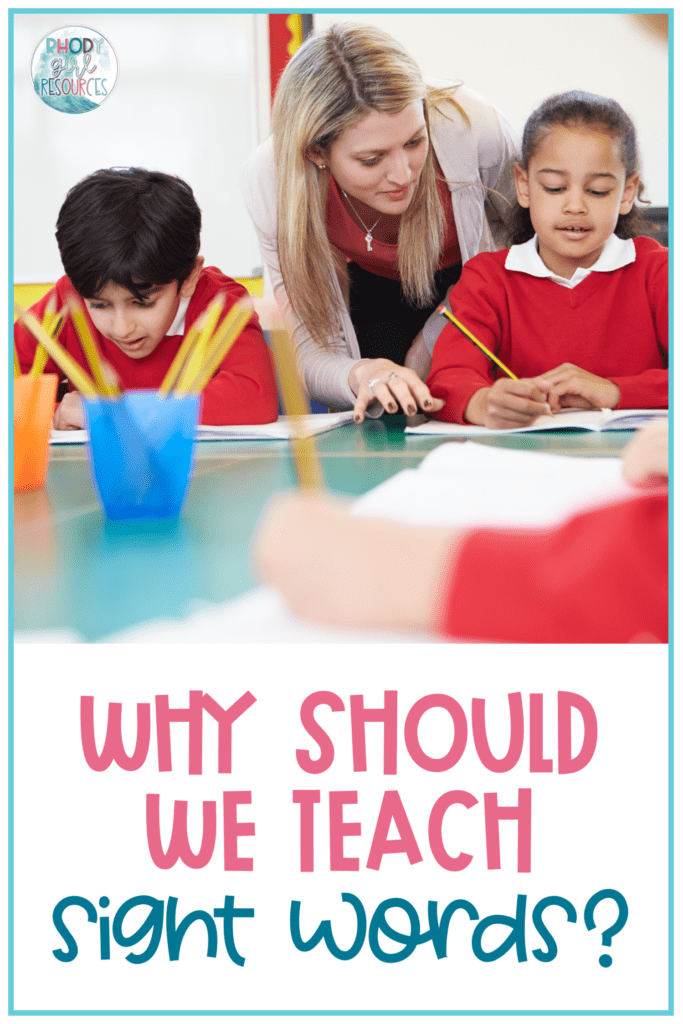In teaching, you frequently hear both the terms sight words and high-frequency words used interchangeably. I’ll admit whenever I heard either one, I thought they were the same thing. But, recently, as I was learning more about the science of reading, I realized I was wrong. So let’s look at sight words and high-frequency words a little closer.

What is the Difference Between High-Frequency Words and Sight Words?
Words most commonly used in written texts are high-frequency words. Research shows that 13 of the most commonly used words make up 25% of the things we read. Other studies show the 100 most common words make up about 50% of the things we read. Examples of high-frequency words include “the”, “like”, “is”, and “to”. Dolch and Fry provide lists of the most common high-frequency words.

When a reader can look at a work and read it instantly, it is a sight word. Readers don’t have to make an effort to read sight words; you know them upon seeing them. For many adults and fluent readers, most words are sight words.
Irregular and Regular Words
You can split high-frequency words into two groups: regular and irregular. Regular words are words that follow regular phonics patterns and are decodable. Readers can sound out decodable words. “In,” “can,” “big,” and “not” are examples of regular high-frequency words.
Irregular high-frequency words are words that do not follow regular phonics patterns. Therefore, a reader trying to use the typical letter-sound correspondences will not be able to read these words. For example, words such as “was,” “of,” and “the” are examples of irregular high-frequency words.

Sight Words vs. High-Frequency in the Classroom
When looking at sight words vs. high-frequency words in the classroom, you need to teach high-frequency words to help them become sight words. The list of words you use doesn’t matter. The way you teach them is what matters.
Why Should We Teach Sight Words?
When students are first learning to read, decoding words can take effort and be frustrating. Young children can become disheartened trying to sound out every word, especially when it doesn’t always work! By helping students turn high-frequency words into sight words, they can instantly recognize the word. When students know some words “by sight,” they no longer need to try and sound out every word. Readers can focus on less familiar words instead of every word.

How to Teach Sight Words for Kindergarten
Phonics lessons, including high-frequency word lessons, should be explicit and systematic. Lessons on blending will help students as they learn to read decodable high-frequency words. When reading, they will try to sound out and blend and be to read these words. Sunding out will not work when a student tries to read an irregular word. Luckily we can help them make these words sight words!
In Kindergarten, letters and sounds are a large focus. They learn only a few phonics rules. Because they learn so few rules, there are more irregular words for them than students in upper grades. Most of these words are temporary irregular words. Down the road, as students learn more rules, they will be able to decode them. Before learning the rules, teachers can help them with the heart word method. Using this method, students look at the parts of a word they can decode and the parts they need to learn “by heart.” After teaching a word, students need practice and exposure. Hands-on sight word activities and digital sight word games are great ways to do this!
You can learn more about sight words vs. high-frequency words using the following links:
- Sight Words vs. High-Frequency Words: What’s the Difference?
- High Frequency Words? Sight Words? Is There a Difference?
- HIGH FREQUENCY SIGHT WORDS
Grab my editable cards for free and start making high-frequency words into sight words!









